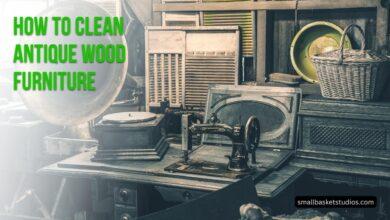Antique French Confit Pots
In the realm of culinary antiques, few items capture the essence of French gastronomic tradition quite like the confit pot. These sturdy, glazed earthenware vessels, steeped in centuries of history, have transcended their original purpose to become coveted decorative pieces and collectors’ items. Antique French confit pots, with their rustic charm and rich cultural significance, offer a tangible connection to the culinary heritage of rural France. This article delves into the fascinating world of these timeless artifacts, exploring their history, craftsmanship, uses, and enduring appeal in both kitchens and homes around the world.
The Rich History of Confit Pots
Origins and Evolution
The story of confit pots begins in the sun-drenched regions of southwestern France, particularly in areas like Gascony, Languedoc, and the Dordogne. These earthenware vessels, known as “pots à confit” in French, have been an integral part of the region’s culinary landscape for centuries.
Early Beginnings
The practice of preserving food in fat, known as “confit,” dates back to ancient times. However, the specific use of earthenware pots for this purpose in France can be traced to the Middle Ages. During this period, the need for effective food preservation methods was paramount, especially in rural areas where fresh meat was not always readily available.
Development Through the Centuries
As the confit technique evolved, so did the pots used to store these preserved delicacies. By the 17th and 18th centuries, confit pots had become more standardized in their design and production. This period saw the emergence of distinct regional styles and the refinement of glazing techniques that would come to define antique French confit pots.
Cultural Significance
Confit pots were more than mere kitchen utensils; they represented a way of life and a culinary philosophy deeply rooted in French rural traditions.
Symbol of Culinary Heritage
In the households of southwestern France, confit pots were prized possessions, often passed down through generations. They symbolized self-sufficiency, culinary expertise, and the ability to provide for one’s family throughout the year.
Regional Pride
Different regions developed their own distinctive styles of confit pots, reflecting local clays, glazing techniques, and decorative preferences. These regional variations became a source of pride and identity for local communities.
Craftsmanship and Design
Materials and Production
The creation of confit pots was a testament to the skill of French potters, who combined functionality with aesthetic appeal.
Clay Selection
Potters carefully selected local clays known for their durability and ability to withstand the high temperatures required for both firing and cooking. The composition of the clay varied by region, contributing to the unique characteristics of pots from different areas.
Forming Techniques
Confit pots were typically wheel-thrown, a process that required considerable skill to achieve the desired shape and thickness. The walls of the pots needed to be sturdy enough to withstand regular use but not so thick as to impede heat distribution during cooking.
Firing Process
After shaping, the pots underwent a two-stage firing process. The first firing, known as “bisque firing,” hardened the clay. The second firing, at a higher temperature, fused the glaze to the pot’s surface, creating a durable, non-porous finish.
Distinctive Features
Antique French confit pots are characterized by several key features that distinguish them from other earthenware vessels.
Shape and Size
Traditional confit pots typically have a cylindrical or slightly tapered shape, with a wide mouth to facilitate easy filling and removal of contents. Sizes varied, with some pots capable of holding up to 20 liters or more.
Glazing
The interior of confit pots was always glazed to create a non-porous surface, essential for food preservation. Exterior glazing varied, with some pots left partially unglazed or featuring decorative glazed patterns.
Colors
The most common glaze colors for antique confit pots are earthy tones such as warm browns, deep greens, and rich ochres. These colors were derived from natural minerals and oxides mixed into the glaze.
Decorative Elements
While primarily functional, many confit pots feature decorative elements such as:
- Incised or relief patterns
- Colored slip decorations
- Maker’s marks or regional identifiers
Regional Variations
The diverse regions of France each produced confit pots with distinctive characteristics.
Gascony
Pots from this region often feature a warm, honey-colored glaze and are known for their robust construction.
Languedoc
Confit pots from Languedoc frequently display a rich, dark green glaze and may include decorative ridges or bands.
Dordogne
Pots from the Dordogne region are often recognizable by their reddish-brown glaze and slightly more elongated shape.
Uses and Functions
Traditional Culinary Applications
The primary function of confit pots was deeply rooted in the culinary traditions of rural France.
Preserving Meat
The most common use for confit pots was preserving meat, particularly duck and goose. The process involved cooking the meat slowly in its own fat, then storing it submerged in the cooled fat within the pot. This method could preserve meat for several months, providing a crucial source of protein during winter.
Other Preserved Foods
Beyond meat, confit pots were used to store a variety of preserved foods, including:
- Vegetables preserved in oil or vinegar
- Fruits preserved in sugar syrup
- Pâtés and terrines
Cooking and Serving
Some larger confit pots were used for cooking as well as storage. Their thick walls provided excellent heat retention, making them ideal for slow-cooking dishes like cassoulet.
Modern Culinary Uses
While modern refrigeration has largely replaced the need for confit preservation, these pots still find use in contemporary kitchens.
Specialty Cooking
Culinary enthusiasts and professional chefs sometimes use antique confit pots for authentic preparation of traditional French dishes.
Serving and Presentation
The rustic charm of confit pots makes them excellent serving vessels for rustic French cuisine, adding an element of authenticity to the dining experience.
Decorative Applications
Beyond their culinary uses, antique French confit pots have found a new life as decorative objects.
Interior Design
Confit pots are prized by interior designers for their ability to add a touch of rustic elegance to various spaces:
- As standalone decorative pieces
- As planters for indoor or outdoor plants
- As umbrella stands or vase holders
Collector’s Items
For antique enthusiasts and collectors, confit pots represent a tangible piece of French culinary history. Rare or exceptionally well-preserved specimens can command significant prices in the antique market.
Collecting and Valuing Antique Confit Pots
Factors Affecting Value
Several factors contribute to the value of antique French confit pots:
Age
Generally, older pots are more valuable, with 18th and early 19th-century specimens being particularly prized.
Condition
The condition of the pot significantly impacts its value. Pots with minimal chips, cracks, or repairs are more desirable.
Rarity
Unusual sizes, colors, or decorative elements can increase a pot’s value, as can pots from less common regions.
Provenance
A well-documented history or association with a particular estate or region can enhance a pot’s value and appeal to collectors.
Identifying Authentic Pieces
Distinguishing genuine antique confit pots from modern reproductions requires careful examination:
Surface Texture
Authentic antique pots often show signs of wear consistent with their age and use, such as subtle crazing in the glaze or wear marks on the base.
Manufacturing Marks
Look for signs of hand-crafting, such as slight irregularities in shape or glaze application. Many authentic pots will also bear maker’s marks or regional identifiers.
Glaze Characteristics
The depth and complexity of color in antique glazes are often difficult to replicate in modern reproductions.
Conservation and Care
Proper care is essential to maintain the value and integrity of antique confit pots:
Cleaning
Use gentle, non-abrasive cleaning methods to avoid damaging the glaze. A soft brush and mild soap are usually sufficient.
Storage
Store pots in a stable environment, away from extreme temperature fluctuations and direct sunlight.
Handling
Always handle antique pots with care, supporting them from the base rather than lifting by the rim or any handles.
Repairs
If repairs are necessary, consult a professional conservator specializing in ceramics to ensure the work is done properly and does not diminish the pot’s value.
The Enduring Appeal of Antique French Confit Pots
Cultural Significance
Antique confit pots serve as tangible links to France’s rich culinary heritage, embodying centuries of tradition and craftsmanship.
Aesthetic Value
The rustic elegance and earthy tones of these pots complement a wide range of interior design styles, from traditional to contemporary.
Versatility
Whether used for their original purpose, repurposed as decorative objects, or cherished as collectibles, confit pots offer versatility that few other antiques can match.
Sustainability
In an era of increasing environmental awareness, the durability and reusability of confit pots align with modern values of sustainability and reduce waste.
French Confit Pot Market: A Statistical Overview
To provide a clearer picture of the antique French confit pot market, let’s examine some relevant data:
| Aspect | Statistics |
|---|---|
| Average price range | $200 – $2,000 |
| Highest recorded sale price | $15,000 (rare 18th-century specimen) |
| Most common size range | 5 – 15 liters |
| Percentage of pots from Gascony region | Approximately 40% |
| Annual growth in collector interest (2019-2023) | 7.5% |
| Percentage of pots repurposed for decoration | 65% |
Note: These statistics are based on aggregate data from various antique markets and auction houses. Actual figures may vary.
FAQs about Antique French Confit Pots
Q: Are antique confit pots food-safe?
A: While many antique confit pots are still food-safe, it’s essential to have them professionally evaluated before using them for food storage or preparation. Some older glazes may contain lead or other harmful substances.
Q: How can I tell if a confit pot is truly antique?
A: Look for signs of age such as wear patterns, crazing in the glaze, and irregularities consistent with hand-crafting. Consult with an antique expert for a definitive assessment.
Q: Can I use an antique confit pot for cooking?
A: It’s generally not recommended to use antique confit pots for cooking, as the thermal stress could damage them. They’re best preserved as decorative or display pieces.
Q: How should I clean my antique confit pot?
A: Use a soft brush and mild soap with lukewarm water. Avoid harsh chemicals or abrasive materials that could damage the glaze or surface.
Q: Are there any famous collections of antique French confit pots?
A: Several museums in France, including the Musée des Arts Décoratifs in Paris, have notable collections of antique confit pots. Some private collectors also maintain significant collections.
Q: Can I find antique French confit pots outside of France?
A: Yes, due to their popularity among collectors, antique French confit pots can be found in antique shops, auctions, and online marketplaces worldwide.
Q: How do modern reproductions compare to antique confit pots?
A: While modern reproductions may capture the general aesthetic of antique pots, they often lack the subtle imperfections, patina, and historical value of genuine antiques.
Conclusion
Antique French confit pots stand as enduring symbols of a rich culinary heritage, bridging the gap between functional kitchenware and decorative art. These versatile vessels, once crucial for food preservation in rural France, have found new life in modern homes and collections around the world. Their rustic charm, combined with the stories they carry of centuries past, continues to captivate enthusiasts, collectors, and designers alike.
As we’ve explored, the world of antique confit pots is rich with history, craftsmanship, and regional diversity. From their origins in the sun-baked kitchens of southwestern France to their current status as sought-after collectibles, these pots have maintained their allure through changing times and tastes.
For those who appreciate the intersection of form and function, history and artistry, antique French confit pots offer a unique opportunity to own a piece of culinary heritage. Whether displayed proudly on a shelf, repurposed as a striking planter, or carefully preserved in a collection, each pot tells a story of tradition, craftsmanship, and the enduring human connection to food and its preparation.
As we move forward in an increasingly digital and mass-produced world, these handcrafted relics of a bygone era remind us of the value of tradition, the beauty of imperfection, and the timeless appeal of objects made with care and purpose. Antique French confit pots, in their quiet dignity, continue to enrich our homes and lives, connecting us to a rich cultural legacy that spans centuries and continents.



